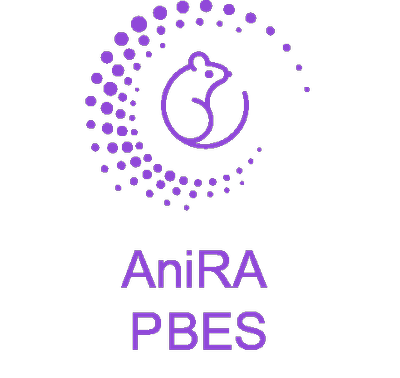AniRA Mouse models
PRESENTATION
Le département "Mouse Models" est en charge de la génération, de la production de souris génétiquement modifiée ainsi que de l'utilisation de modèles infectieux animaux. Ce département propose des services variés et développe en permanence de nouveaux outils pour la génération et la validation de modèles expérimentaux .
AniRA Mouse Models dispose d'une animalerie centrale (AniRA-PBES) comportant un service de transgénèse perfomant qui utilise entre autre des vecteurs lentiviraux developpé en relation avec la plateforme d'analyse génétique (AniRA-Analyse Génétique) et la plateforme de vectorologie (AniRA-Vectorologie). L'animalerie AniRA-PBES dispose d'une zone A1 et de zones A2 et A3 permettant l'utilisation de modèles infectieux. Ce département dispose également d'un laboratoire de niveaux 3 (AniRA-L3) permettant ainsi de proposer à la communauté scientifique des modèles animaux infectieux pertinents.
 |
 |
 |
 |
SERVICES proposés
PRODUCTION DE VECTEURS VIRAUX
Production de vecteurs lentiviraux destinés au transfert stable et efficace de séquences nucléiques (gène, ADNc, Sh/miARN) dans des lignées cellulaires, des cellules primaires difficilement transfectables (cellules souches, …) ou chez un organisme entier.
- conseil dans le choix des vecteurs, pour le clonage de gènes d’intérêt et pour le niveau de biosécurité des vecteurs.
- production de vecteurs pour la surexpression de gènes endogènes ou l’expression ectopique d’un gène dans une lignée cellulaire.
- production de vecteurs pour le KO de gènes par des vecteurs codant des shRNAs dirigés contre l’ARN du gène d’intérêt.
- production de vecteurs de régulation d’expression de gènes ou conditionnant le KO de l’expression de gènes par des lentivecteurs inductibles.
- production de vecteurs de niveaux de confinement C2 ou C3
- titration basée sur l’expression d’une protéine rapportrice, par sélection avec un antibiotique et par Q-PCR.
Pour plus d'info : AniRA-Vectorologie
CREATION DE LIGNEE MUTANTE
Production de lignées génétiquement modifiées par :
- transgénèse classique (ADN, BAC),
- recombinaison homologue via les cellules ES,
- lentigenèse,
- ingénierie du génome (TALE nuclease ; CRISPR/Cas9).
Pour plus d'info : AniRA-PBES
DECONTAMINATION DE LIGNEEs ET CRYOCONSERVATION
- Décontamination des lignées par transfert aseptique d’embryons.
- Cryo préservation des lignées sous la forme d’embryons, sperme ou ovaires et leur distribution.
Pour plus d'info : AniRA-PBES
GENOTYPAGE
- Génotypage en routine des animaux mutants produits, par PCR.
- Détermination du nombre de copies d'un transgène par qPCR
- Technologies de qPCR
Pour plus d'info : AniRA-Analyse Génétique
ELEVAGE ET PRODUCTION DE LIGNEE
- Elevage et production en cages ventilées de lignées murines EOPS (Exempt d’Organisme Pathogène Spécifique) => 3000 cages.
- Mise à disposition et entretien des animaux dans des zones expérimentales de confinement A1, A2 ou A3 => 2000 cages.
Pour plus d'info : AniRA-PBES
MODELeS INFECTIEUX
Production de modèles en confinement A2, A3 ou BSL2 et BSL3 :
- Développement de nouveaux modèles de maladies infectieuses
- Développement de modèles murins humanisés pour l'étude de pathogènes humains
- Interactions des virus émergents avec leur vecteur (moustique) et leur hôte (animaux, humain)
Plus de détails AniRA-L3 et AniRA-PBES
PROGRAM R&D "ANIRA "
Depuis 2014, la SFR Biosciences organise un appel d’offre annuel pour soutenir un projet collaboratif de développement méthodologique ou technologique innovant. Les projets sont évalués par un comité scientifique composé de 4 scientifiques et de 4 personnels plateaux. L’évaluation se fait selon les critères suivant : qualité scientifique et caractère innovant, intérêt pour la communauté scientifique, possibilité de développement de nouvelles prestations sur les plateaux de la SFR Biosciences.
MANAGEMENT QUALITE
Pour répondre plus efficacement aux besoins des utilisateurs et également, leurs garantir une transparence et une fiabilité des résultats pour leurs travaux de recherche, la direction de la SFR BioSciences a souhaité initier une démarche qualité ISO : 9001 au sein de sa structure et a créé une cellule Management Qualité. Cette cellule coordonne activement la mise en place opérationnelle des projets qualité des plateaux techniques de la SFR et notamment ceux de la plateforme AniRA, labellisée IBiSA.




